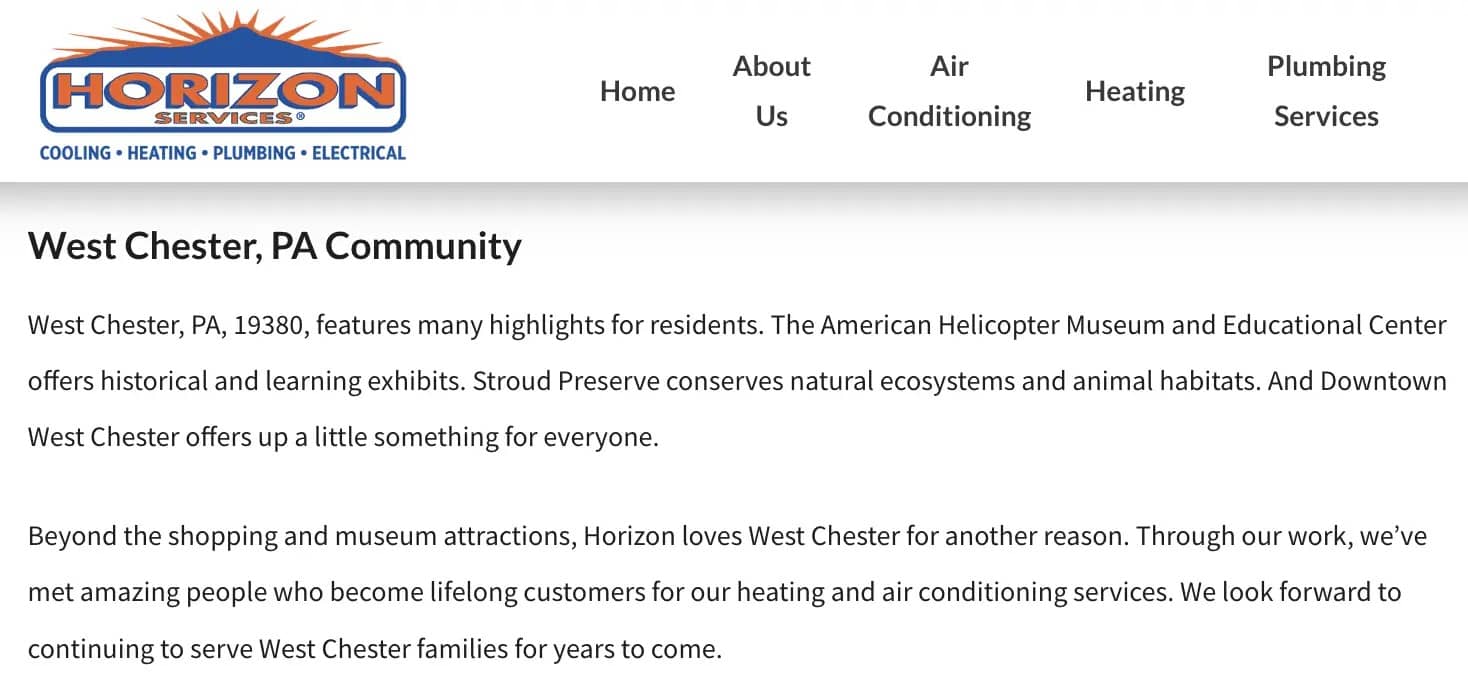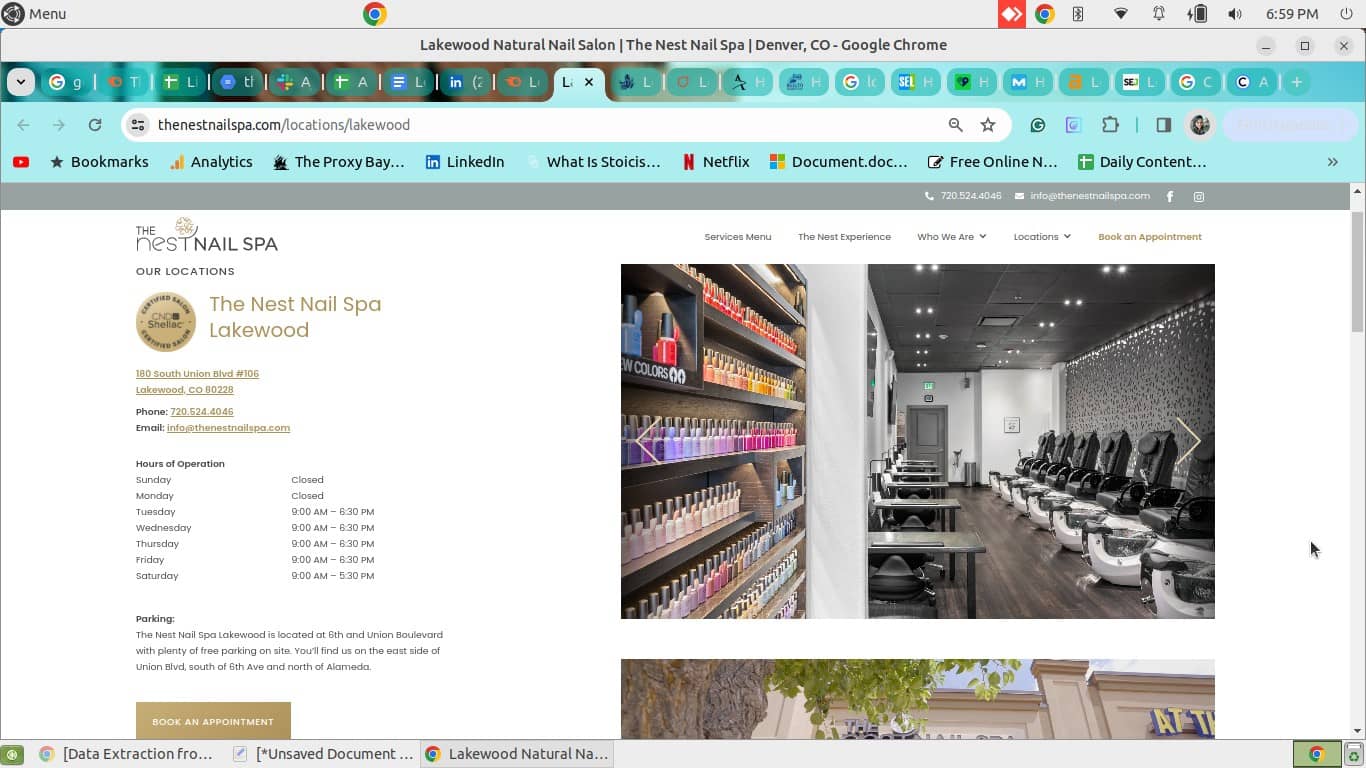Last Updated on April 13, 2025 by Admin
Location pages serve as digital storefronts for businesses operating in multiple areas. They’re highly important because they can help you appear in search engines and attract customers. But to shine, you need a strong SEO game. Without it, your website might end up with too many pages that don’t add much value. In this guide, we’re going to walk you through how to get your location pages just right for local SEO success. Let’s begin!
What is a Location Page?
A location page is a web page that gives detailed information about a particular business location in a specific city, county, or state. It may include address, contact information, operating hours, and often a map or directions.
For example, here’s a location page from NannyPod, a babysitting service targeting Boston, MA:

Location pages aim to give customers all the necessary details to find or contact the business easily. They can help increase the chances of appearing in local Google search results and drive customers to your website.
What is Location Page SEO?
Location page SEO is the practice of optimizing individual pages on a website for specific geographic locations. This optimization aims to improve their visibility in local search engine results. It also helps generate more website traffic from those regions. This is particularly important for businesses with physical locations or those targeting specific geographic areas.
Best Practices for SEO-Friendly Location Pages
Here are the steps to create a successful, SEO-driven location pages:
1. Use location-specific keywords
When managing a business online or with a physical storefront, you must ensure your local customers can find you easily. This is where location-specific keywords or local SEO keyword research comes into play.
Let’s understand it in more detail:
- For the single-location shops: If your shop has only one location, ensure your city’s name pops up throughout your website. It could be mentioned in the content, meta tags, and even in the URL. This signals to search engines that your business is located in a specific city. It thereby increases your visibility in local search results.
- For multi-location shops: If your business has several locations, then multiple location SEO optimization will suit your business, create a separate page for each location on your website. On these pages, mention the location’s city along with your main services. This helps search engines recognize and rank each location independently in local searches.
- Service area business with a physical office: If your business serves multiple areas from a single office, mention your office’s city throughout your site. Also, highlight the areas you serve. This approach helps you appear in search results for your base city and the areas you serve.
- Service area businesses without a physical office: If you don’t have a physical location but serve various areas, ensure your website lists all these service areas. This helps improve your visibility in local searches across these locations.
Here’s an example to help you understand better:
Suppose there’s a bakery named “Baker’s Delight” with locations in Cedar Rapids and Marion, Iowa.
Cedar Rapids, Iowa
Marion, Iowa
Location-specific keywords:
Cedar Rapids
Marion
Target keywords:
Bakery, custom cakes, pastries
Title Tag for the Website:
Custom Cakes and Bakery in Cedar Rapids | Baker’s Delight
Custom Cakes and Bakery in Marion | Baker’s Delight
Meta Description for the Website:
Visit Baker’s Delight in Cedar Rapids for custom cakes and a variety of pastries tailored for any event.
Explore Baker’s Delight in Marion for bespoke cakes and fresh pastries perfect for every occasion.
H1 Tag for the Website:
Cedar Rapids Custom Cakes and Pastries
Marion Custom Cakes and Pastries
URL Path for the Website:
/locations/cedar-rapids
/locations/marion
This can help you improve your chances of being found by local customers searching for your services.
2. Implement location-specific content
It’s essential to ensure that each page’s content is unique and specific to that location. Don’t just copy the exact text and swap out the city names because search engines like Google don’t like that. They might think you’re trying to trick them, which could lower your ranking in search results.
Take the time to customize your content for each location. Add details that show you know the area and understand what local customers want. By mixing the right location-specific keywords into your content and headings, you’ll boost your chances of showing up higher in search results.
For instance, look at a business called Horizon Services and its web page for West Chester, Pennsylvania. They’ve done a good job by including details and attractions that are unique to West Chester, making their local page stand out.

3. Include business hours
The next location page SEO strategy is to include business hours. It’s really frustrating for customers when they look up a business’s hours, decide to visit, and then find out the place is closed because the hours were wrong on the website or Google My Business (GMB) listing.
To stop this from happening to your customers, make sure you clearly list your business hours on your website’s location page. These hours must be the same as what you’ve put on your Google Business Profile listing.
4. Include location-specific images
Using images can improve your location pages by making the content more appealing and more accessible to go through. Google also uses images in its search results for location-based queries.
For better results, include images related to your content that are specific to each location. Here are some high-quality image ideas you could use:
- Exterior and interior photos: These images show what your business looks like from the outside and inside. They help people recognize your business when they visit.
- Product or service images: Show off your products or services. If possible, use pictures that show them being used in the local area.
- Staff and team photos: Adding pictures of your team can make your business feel more personal. People like to know who they’ll be dealing with.
Here’s an example of a location page from The Nest Nail Spa. They have included images of their products, interior, and more in slideshow form.

5. Showcase customer reviews
Adding customer reviews on your location page is a smart move. It helps build trust with your local audience. When people see positive reviews, they feel more confident about your business. It’s like getting a thumbs-up from the community. Not only does this make your business look more credible, but it also boosts your standing in the eyes of search engines.
Plus, reviews play a big part in helping people decide whether to visit your business or buy something from you. So, featuring customer feedback can directly influence their choices, steering them towards choosing your services or products.
6. Use an actionable and relevant CTA
Using a relevant and well-crafted call to action (CTA) guides visitors on what to do next and what action to take. It’s important to have a clear goal and a straightforward method to encourage your audience to act.
Whether you want customers to reach out to your business, browse your products or services, ask for a quote, book an appointment, or come to your physical location, a clear and appealing call to action (CTA) can take them toward the next step. By doing this, you’re more likely to increase conversions and meet your business goals.
Wrapping Up!
So, it’s clear that location page SEO plays a vital role in enhancing a business’s local visibility and driving more traffic. To succeed in it, you must create location-specific content, integrate relevant keywords, and focus on customer reviews as well. If you need any help with creating location pages, it’s advisable to contact a leading digital marketing agency like AlgoSaga. Get in touch with them today!
